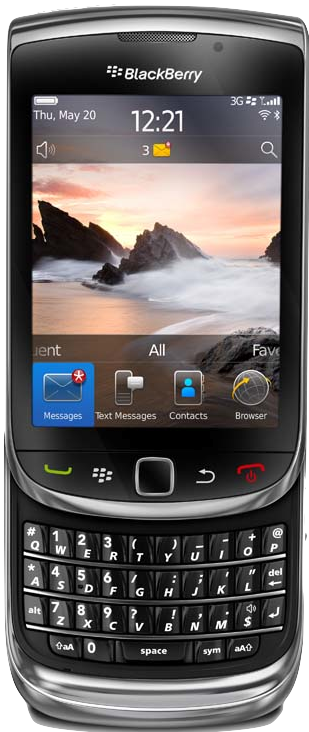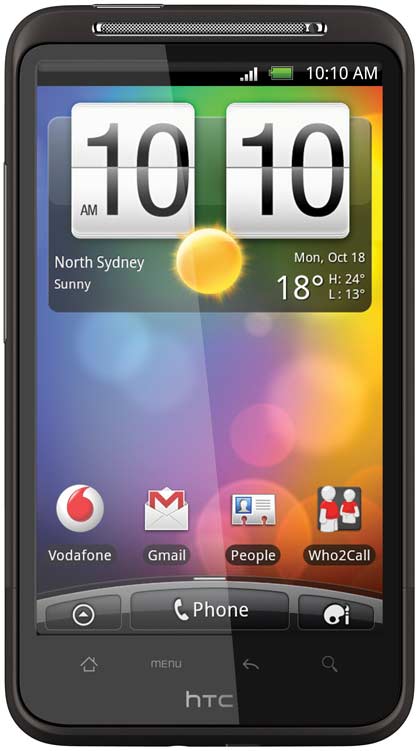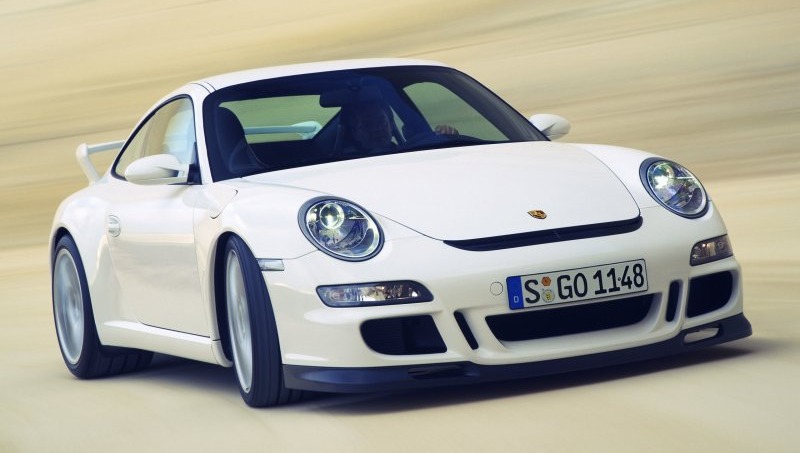OK, this suffering a little from the usual simplification inherent to this seemingly favourite pastime of many, namely of creating infographics, but I thought there were a few interesting bits in there nonetheless, so enjoy… 🙂

This week’s Carnival of the Mobilists comes to you from Kansas, more specifically from Steven Hoober, and here’s what he has in stock for you:
The carnival is live here. Go read! 🙂
 Every now and then something comes and just delivers. These moments feel awesome, don’t they? I had one such experience today, so let me share it. Hailo (Crunchbase profile here) solves one of the world’s (well, for the time being, London’s) little problems, namely to hail a cab. You either stand around waving futiley around only to have people being picked up left, right and center (but never you) or you fiddle with phone numbers and hope they’re not busy, etc, etc.
Every now and then something comes and just delivers. These moments feel awesome, don’t they? I had one such experience today, so let me share it. Hailo (Crunchbase profile here) solves one of the world’s (well, for the time being, London’s) little problems, namely to hail a cab. You either stand around waving futiley around only to have people being picked up left, right and center (but never you) or you fiddle with phone numbers and hope they’re not busy, etc, etc.
Hailo is the self-proclaimed Taxi Heaven. And you know what? They certainly delivered. Here’s how it works: (1) get their app (for the time being available on iOS and Android). (2) fire up the app, it locates you and tells you how long you’d have to wait (6 minutes in my case). (3) press a button to “hail” the cab and you’re done.
The app keeps you up to date with progress (tour confirmed, updating ETA, etc). You can call the cabbie (who is provided to you by name) if you want, too. You can choose to pay with cash or by card (you can store your credit card in your profile and even add tips automatically). You take your ride. You pay. And if all that wasn’t enough, they even send you a receipt by e-mail.
It works like a poem. B-e-a-utiful! I am a sucker for betas but as you know (if you are equally inclined) that often causes frustration, too, because, well, it’s bloody beta. If what Hailo delivered is beta (and they’re early!), then their “gold” release will have you sinking to your knees.
Hailo is approved by TfL (Transport for London, the city’s transport regulator) and works (only) with “black cabs” (they are the nice, iconic official ones). For the drivers, they seem to be trying to make it easy AND add functionality: no hardware, no subscriptions, no exclusivity. Additionally, they use the drivers’ app (different to what me mere mortal uses) to spread word on traffic, status of any taxi ranks (100 cabs waiting for customers? Go somewhere else…).
Hailo, you guys rock!
I have been blogging way too little recently, so here’s – finally – a bigger one again.
What is a Publisher?
I have recently been asked more and more what the role of a publisher in mobile gaming is today. I mean, heck, there are now even websites proclaiming the (traditional) publishers’ death. On the other hand, venerable old and ruthless new ones are on a spending spree acquiring – seemingly – studios and smaller publishers by the dozen: In the past year or so, EA gobbled up Playfish, Chillingo and Firemint (and probably a few more I don’t know of). Zynga, even hungrier, absorbed XPD Media, Challenge Games, Conduit Labs, Dextrose, Bonfire Studios, Newtoy, Area/Code and Floodgate Entertainment. So what is right?
According to Wikipedia, a videogame publisher is (was?) someone who
publishes video games that they have either developed internally or have had developed by a […] developer. […] They usually finance the development […]. The large video game publishers also distribute the games they publish, while some smaller publishers instead hire distribution companies (or larger video game publishers) to distribute the games they publish.
Other functions usually performed by the publisher include deciding on and paying for any license that a game may utilize; paying for localization; layout, printing and possibly writing of the user manual; and the creation of graphic design elements such as the box design.
Pretty old-school stuff, you say? Erm, yes. Broken down from its beautifully naive pseudo-scientific language, we arrive at the following:
Is the Same in the Digital Realm?
Now, the Wikipedia definition pretty much focuses on traditional console and PC publishing, it seems (box art anyone?). And this is where the new world sharply departs. No box art, no Walmart or GameStop deals are required if digital distribution is in place. How difficult can it be then for the more modern, more evolved (?) world of digitally distributed and, perhaps (but only perhaps) even more specifically for mobile games?
Nos. 1 and 2 above are pretty much arbitrary parts of the puzzle: you can get money from many places (or not of course) but it is a financing game, and video games could be called a specific (because intrinsically hit-driven) asset class. That is to say, these are not unique attributes.
No. 3 is a combination of money, know-how, experience and network. The more complex the landscape the higher the value of a specialist in the field.
No. 4 is, well, arguably a much easier game when you can feed your distribution channels from your own desk – via the Internet. However, again, the more channels you need to serve, the more complex the landscape, the higher the value of someone "who knows".
Nos. 3 and 4 are – arguably – what made Chillingo (based in the same honest North-West English town as I am) what it is (or, prior to its acquisition by EA, was): Chillingo seems to have had a knack of identifying good or at least decent games and promote them effectively across digital channels. Alas, their biggest hit, Rovio’s Angry Birds had not much good to say about them in terms of support. And indeed, if one looks at what Rovio did with its hit title outside of the Chillingo relationship, one can argue about the value add it had received from its publisher. But then again, Angry Birds seems to have been one of a kind, and there are other titles Chillingo brought to reasonable success that may not have had the same success – be it for lack of a Mighty Eagle such as the fearless and tireless Peter Vesterbacka or otherwise.
Changed Metrics
Chillingo, alas, is not where it’s at, I think. The war is being fought over those (in)famous MAUs – or monthly active users. You see, if you can command those hundreds of millions and parade your own wares by them, the likelihood of your next game becoming a success rises: Digital connectivity solves the dilemma of publishing of old, and that was to attract the attention of the gamer (your customer!) for your next release.
In a box-product world, you had to shout again, and very loudly, in order to have your customer part with his hard-earnd monies for the benefit of your title rather than your competitors’. This is – arguably – why EA Sports sponsors UK football (scil. soccer) broadcasts: "please, God, let people not defect to Konami’s PES from my very own EA FIFA".
Now, Zynga laughs all the way to the bank on this: if you played FarmVille, you will not have come around of realizing that CityVille was out. And you would also get additional points if you also played Zynga Poker. The result? Well, check the top-10 games charts for Facebook games for yourself. Suffice to say that Zynga is – according to the second market – worth more than Electronic Arts… Why is that? Eyeballs, addressable users, dollars spent per acquired user. That the business model is a little different for console games than it is online, doesn’t really matter for the argument here: you can drastically reduce the user acquisition costs if you play it smartly, so no need to take in $39.99 per game in order to break even. $1 or $5 will be just fine, thank you very much.
The above is also the reason for the spending spree of the publishers, I would suggest: if you can buy eyeballs and get a studio with proven skills (just check out either of Newtoy or Firemint on the mobile end), and you can combine it with a mechanism to attract people to future releases, there is a much better chance you can recoup your investment on that future release (effectively de-risking nos. 1 and 2 from the above list).
And now for Mobile!?
Zynga, EA’s Playfish and Crowdstar have shown that you can tweak the fortunes your way if you smartly combine game releases, updates and promotions to work with each other. But how is it for mobile? Backflip Studios, which rose to fame with a simple but well-executed game ("Paper Toss"), claimed to have had racked up more than 2m daily active users and 50m total downloads, mostly driven through promotion of its own titles inside, well, its own titles. Did it have a publisher? No. Does it have a very smart CEO who solved nos. 1 and 2 above and knows how to play no. 3 itself? Yes. So what about no. 4, distribution? Well, on iOS, that is a non-issue: one distribution channel to bind them all. However, on Android, it still falls short of a copycat, "Toss It", who were there earlier, are as ingenious and still rule. And elsewhere? Not much.
But we don’t have to rely on one case alone, and one by a small – though incredibly smart – studio no less. Look at Zynga’s performance on mobile. It is mediocre at best. EA though? Not so bad. What do they do? Well, apply the good old publishing principles learned in the olden world.
And this is where the specific complexities of mobile come into play: mobile is fiendishly complex. On the OS side, there is iOS, Android (in an increasing number of iterations), Windows Phone 7 (with some added spice since the announcement of their Nokia partnership), Blackberry, Samsung’s bada, and then maybe BREW, perhaps still a little bit of Symbian and J2ME. But then there are also the still mighty gatekeepers, the mobile operators. And then you will see that users tend to want to have it their specific way, ideally localized. The plethora of channels thus created makes it tough on a developer to maneuver its way through…
There are tools that can aid progress (and, yes, our very own Scoreloop provides some of them) but it is important to recognize the complexity of it all. Reaching users and convincing them with compelling offers is key to success in any world. It is important to bear that in mind in mobile, too. And if you think you cannot walk it on your own, a publisher might just be the right partner for you.
Changed Weighting
Since 1. and 2. above might not be such a big thing anymore (mobile titles can be developed for less – and, yes, I know this does not necessarily apply to the likes of "Galaxy on Fire" or "Real Racing") and 3. might be manageable but 4. might (not: always is) still be a key reason to part with some share in order to reach the user, convince the user, be able to bill the user.
Two months ago, I mused over handsets, packages, and the like. The reason was – if I may briefly recall – that my contract ran out. I reported on a number of options but never told what happened. Here’s what:
The Carrier
I hinted as much before: it is Vodafone who have me in their grip now. The data roaming rates did it (although they have fairly decent international rates, too, specifically with Vodafone Passport, which must be one of the first programmes where a large multi-national carrier leverages its geographical spread; T-Mobile, take note!).
The Handset
 Quick recap: I was looking at device options (the contracts I tend to be on are unhealthily big, which normally gives you a free device on top of it, and why the heck not). Since I already have an iPhone (3 and 4), a Google Nexus and various Nokias, I thought what next? Do I try out another Android device? Do I give Windows Phone 7 a go? Or do I return to my old love, Blackberry. And the last one won me over. So I fell for it, and went with the brand-new Blackberry 9800 Torch. Touch screen plus QUERTY plus Blackberry e-mail. You should think that that’s pretty need and, really, all you could wish for (sorry, Microsoft, I didn’t dare – yet).
Quick recap: I was looking at device options (the contracts I tend to be on are unhealthily big, which normally gives you a free device on top of it, and why the heck not). Since I already have an iPhone (3 and 4), a Google Nexus and various Nokias, I thought what next? Do I try out another Android device? Do I give Windows Phone 7 a go? Or do I return to my old love, Blackberry. And the last one won me over. So I fell for it, and went with the brand-new Blackberry 9800 Torch. Touch screen plus QUERTY plus Blackberry e-mail. You should think that that’s pretty need and, really, all you could wish for (sorry, Microsoft, I didn’t dare – yet).
Trials and Tribulations
But, alas, it was not so. It turned out that two-odd years in the claws of the iPhone and Android had seriously spoilt me, also – and this was concerning – with respect to e-mail. I first learned that I could actually type pretty damn quickly on a touch keyboard now (better on the iPhone, less so on the Nexus), so the keyboard did not really do it. But that was not really it. The little things did it:
On the good side? There is of course Brickbreaker (new high-score: 28,350 (!!!)) but, aside from that, the fairly solid feel of the handset, the nice rubbery back (really nice in fact) and the somewhat quaint but familiar design lines plus decent touch was all very good. I really liked the handset as such. But what was in it, not so much.
The New Kid
 So – you probably guessed it – I gave it back and exchanged it for an HTC Desire HD. Only a couple of years ago, this would have been unthinkable. Not only was I a fairly die-hard Blackberry fan but to replace a Blackberry with a Taiwanese newcomer handset? Voluntarily? Noooo! However, it is gorgeous (besides being a bit of the big – no, really big – side). It does all the things that so frustrated me on the Blackberry so much better. Well, slicker at least. E-mail set-up is a breeze for Gmail but only a little less onerous than on the Blackberry for others (and, yes, the QUERTY does help for weird password combinations), but, once done, it works really well. And then, there’s of course the little things: 8 mega-pixel camera with stunning quality (although the lens sticks out a little at the back, which might be not so good), comparatively wholesome goodness when it comes to apps (in spite of the shortfalls of Android Market), heck, it synced all my apps from my Nexus automatically. And, Apple get this, it adds little raindrops (and a windscreen wiper) in one quick animation should it rain where ever you are (which, in England’s North-West, it does quite a lot, I’m afraid). Sweet! Browser works beautifully, maps come with proper satellite navigation on par with dedicated devices, and so on, and so forth.
So – you probably guessed it – I gave it back and exchanged it for an HTC Desire HD. Only a couple of years ago, this would have been unthinkable. Not only was I a fairly die-hard Blackberry fan but to replace a Blackberry with a Taiwanese newcomer handset? Voluntarily? Noooo! However, it is gorgeous (besides being a bit of the big – no, really big – side). It does all the things that so frustrated me on the Blackberry so much better. Well, slicker at least. E-mail set-up is a breeze for Gmail but only a little less onerous than on the Blackberry for others (and, yes, the QUERTY does help for weird password combinations), but, once done, it works really well. And then, there’s of course the little things: 8 mega-pixel camera with stunning quality (although the lens sticks out a little at the back, which might be not so good), comparatively wholesome goodness when it comes to apps (in spite of the shortfalls of Android Market), heck, it synced all my apps from my Nexus automatically. And, Apple get this, it adds little raindrops (and a windscreen wiper) in one quick animation should it rain where ever you are (which, in England’s North-West, it does quite a lot, I’m afraid). Sweet! Browser works beautifully, maps come with proper satellite navigation on par with dedicated devices, and so on, and so forth.
Mind you, I am not yet sure if I may not change back to my iPhone 4 (which is, let’s face it, damn slick!). But I will give the Desire its run, and it does pretty well so far.
Blackberry Needs to Up the Ante!
But let’s look at my old friend Blackberry. Read through the last two paragraphs, and you know where Blackberry needs to up the ante. The Torch – its newest handset with its newest OS – feels slow, sluggish, dated, laboured.
But not all might be lost: last week, at CES, I could catch a glimpse of the future: RIM’s Blackberry PlayBook, which runs on QNX, rumoured to be the foundation for the next generation of “proper” Blackberries, too. And a beauty it is: much more hardware power (dual-core processor, namely a 1 GHz Texas Instruments OMAP 4430), swish graphics (1080p video inclusive), really impressive multi-tasking (HD video + game + websites + whatever open in parallel and seamless change from one to the other in an easy and casual swipe with no lag in any of it), and it will apparently be available on Sprint’s 4G network. Check here for the full specs.
It did however lack e-mail! Yes, you read that correctly: you can apparently not get RIM’s mother of all killer apps on the PlayBook – unless you also happen to have a “normal” Blackberry (or something to that end; the folks at the Blackberry booth were a little shy about this). What were they thinking???
But let’s take stock. What does RIM have? A – so far – healthy balance sheet, good hardware, still great e-mail service infrastructure (albeit not as unassailable as it used to be), in BBM a hit in the youth market and – arguably – a bit more of a runway than most because of the – again arguably – longer times it will take enterprise IT departments to swap systems (or something along these lines; Dell is probably an exception so far). In QNX, it also seems to have a really powerful OS at its disposal (just add e-mail, please). And, finally, it has a proud history of very good handsets (the Bold must have been one of the best ever) as well as demonstrated expertise to break into new verticals (as the Pearl had shown).
So, my dear friends from Waterloo, Ontario: do it. I think you can, just show us, will you? 🙂
 Every now and again, war breaks out on the web. Or, rather, a full-on discourse of learned scholars on the world at large or, in our case, mobile in particular. This week saw one such blog fights and, no, I am not talking about Wikileaks. The formidable Robert Scoble (he of recent European ignorance but, hey, he is American after all… ;-)) and Tomi Ahonen (Rat-Hat of Forum Oxford and a certain [but not blind!] Nokia-fandom but, hey, he might live in HK but he is a Fin… ;-)) brought it on about the fall or not of Nokia.
Every now and again, war breaks out on the web. Or, rather, a full-on discourse of learned scholars on the world at large or, in our case, mobile in particular. This week saw one such blog fights and, no, I am not talking about Wikileaks. The formidable Robert Scoble (he of recent European ignorance but, hey, he is American after all… ;-)) and Tomi Ahonen (Rat-Hat of Forum Oxford and a certain [but not blind!] Nokia-fandom but, hey, he might live in HK but he is a Fin… ;-)) brought it on about the fall or not of Nokia.
It started with one of Tomi’s long, long posts on “Some Symbian Sanity” to which Scoble responded “Why Nokia is Still Doomed“. Because he referenced Tomi, he – if you know him, you’d say “of course” – responded with another long post defending Nokia’s smartphone strategy and execution. You should think Tomi has the harder corner to fight, right? 😉
Let me briefly summarise the warring parties’ viewpoints. I will then offer my own take on this to decide who’s right.
Scoble’s Opinion
 Scoble first, he, never shy for words, delivered a swift and damning verdict on Nokia: Illustrated ventured Eastwards again to LeWeb last week and took stock of Europe’s smartphone pulse.he reckons that Nokia is dead because none of his friends has one or, if they do, they don’t like it. People pile up in Apple stores and wax lyrical about the apps they find on the iPhone and iPod Touch. Nokia is arrogant rather than cognisant of its shortfalls and he has not recently heard of a strategy. The people (and/or Scoble’s friends) love iPhone. Case closed.
Scoble first, he, never shy for words, delivered a swift and damning verdict on Nokia: Illustrated ventured Eastwards again to LeWeb last week and took stock of Europe’s smartphone pulse.he reckons that Nokia is dead because none of his friends has one or, if they do, they don’t like it. People pile up in Apple stores and wax lyrical about the apps they find on the iPhone and iPod Touch. Nokia is arrogant rather than cognisant of its shortfalls and he has not recently heard of a strategy. The people (and/or Scoble’s friends) love iPhone. Case closed.
Tomi’s Original and Scoble Riposte
 It’s always a little more difficult to summarise Tomi’s posts as he doesn’t do quick ones. Who knows him is aware that he is a big fan of numbers, of big numbers, in fact. And this is why he hangs on to Nokia: because, you know, their numbers are big! His original post goes – very, very simplified – like this: he sets off to compare Apple with Porsche (as opposed to, say VW). He didn’t reference my recent post on this (tut, tut, Tomi) but the gist is the same: Nokia doesn’t only do Porsche, it does everything from VW Polo (or Chevy Matiz, Kia something or other) to Bentley (well, maybe that not anymore unless you count Vertu in). Its competitor is therefore not Ferrari but Toyota or – in the mobile world – not Appele but Samsung.
It’s always a little more difficult to summarise Tomi’s posts as he doesn’t do quick ones. Who knows him is aware that he is a big fan of numbers, of big numbers, in fact. And this is why he hangs on to Nokia: because, you know, their numbers are big! His original post goes – very, very simplified – like this: he sets off to compare Apple with Porsche (as opposed to, say VW). He didn’t reference my recent post on this (tut, tut, Tomi) but the gist is the same: Nokia doesn’t only do Porsche, it does everything from VW Polo (or Chevy Matiz, Kia something or other) to Bentley (well, maybe that not anymore unless you count Vertu in). Its competitor is therefore not Ferrari but Toyota or – in the mobile world – not Appele but Samsung.
He then dives into Nokia’s strategy. And this is when it goes a little, well, foggy. Symbian being miles ahead (yes), Symbian kicking a** today with the N8 (erm, no), Apple’s original (sic!) iOS failing when it comes to phone features (well, yes, maybe, but who is using the “original” iOS today? Or the original Symbian for that matter?). And then he goes on to run the numbers. Now, according to him (and I didn’t check the numbers) Nokia + Japan = 45% smartphone market share for Symbian in 2009 (down a whopping 11% even by his count from 2006). Now, here’s where the questions start (more later). Then onwards to the mass market (more later). And, Tomi (being the very smart man and learned scholar he is) recognises Symbian might be a bit old and clunky and (rightly and unsurprisingly) pits MeeGo against this: new, open, Linux-based, etc. A winner, right? (more later). Therefore, Tomi heralds Nokia as being the perfect example in moving from “dumbphone” to smartphone.
Following Scoble’s burst of opinion as per above, Tomi reverted with more (as he does). I’ll skip through most of it. However, one point he raises is that the US is only 8% of the global market (true). It is though higher on smartphone consumption and (one language, one currency and all) provides a cool launchpad in a rich (yes, still) market. And Nokia is the Robbie Williams of the mobile world when it comes to the US: never managed to break it! He goes on to answer the “Nokia’s not cool” argument and refers to eco-friendly. Well, Tomi, that’s a little lame. Face it: Nokia lost its cool. Period. No argument! Apps? Yes, I know Ovi is catching up but, come on, the app store changed the bloody ecosystem (Nokia had about 4 iterations pre-Ovi who all miserably failed; Apple provided the paradigm-shift – face it).
Who is right?
The weird thing is that they both are (or, more controversially, neither is)!
 And here’s why (hint: Tomi did get it right but then got carried away on the Finnish ticket): Tomi nailed it in his first post when he compared Apple to Porsche. Apple is not (or not yet?) competing with the Volkswagens and Toyotas of the mobile world. Now: in the automotive world, Porsche failed with the big coup (but, let’s remember, only just!). Apple might yet pull it off. The starting point is not dissimilar: super-high margins, a very comfortable lead in the luxury segment and loads of cash. Porsche over-reached (driven by a perhaps over-zealous ruler). Apple might, well…
And here’s why (hint: Tomi did get it right but then got carried away on the Finnish ticket): Tomi nailed it in his first post when he compared Apple to Porsche. Apple is not (or not yet?) competing with the Volkswagens and Toyotas of the mobile world. Now: in the automotive world, Porsche failed with the big coup (but, let’s remember, only just!). Apple might yet pull it off. The starting point is not dissimilar: super-high margins, a very comfortable lead in the luxury segment and loads of cash. Porsche over-reached (driven by a perhaps over-zealous ruler). Apple might, well…
Scoble looks at the US first and foremost. And it is – in spite of the many struggles – a formidable market still. And Apple made one of the most impressive market entries of all time! Now, will it be equally easy to capture China, India, Brazil, Russia, Indonesia, etc? I doubt it. Does Scoble see this? No.
As to Tomi: you may want to count in the likes of Foxconn in the more formidable competitors of the mighty Finns. But that aside, yes, it’s mainly Samsung today. As a matter of fact, we need to start looking at handset (and OS) segments a little differently. Symbian might be a smartphone platform in the old definition but it does not (usually) stack up against Apple’s iOS or the slicker iterations of Google’s Android in the new world. This is why Nokia keeps losing market share in the high end rapidly (and loses market capitalization equally fast) and why Apple’s market cap is at an all time high! Will it win the war? No, not necessarily. And Nokia still has a shot. But the N8 was too little too late: hardware specs don’t count, the user experience does. And Nokia lost it on that front (compared to its up-market rivals).
So, folks, just re-read my post on Volkswagen and Porsche, will you? And settle your little tiff… 😉
This week’s Carnival of the Mobilists is up at Andy Farrell’s MobiThinking blog, and it’s a big one this time. Andy assembled intriguing posts from contributors old and – more importantly – new, including pieces on:
As always, a very worthwhile read. Go and check the posts!
If you want to contribute to future editions of the Carnival, please provide a link to the post you want to be considered to mobilists@gmail.com.
Powered by WordPress & Theme by Anders Norén